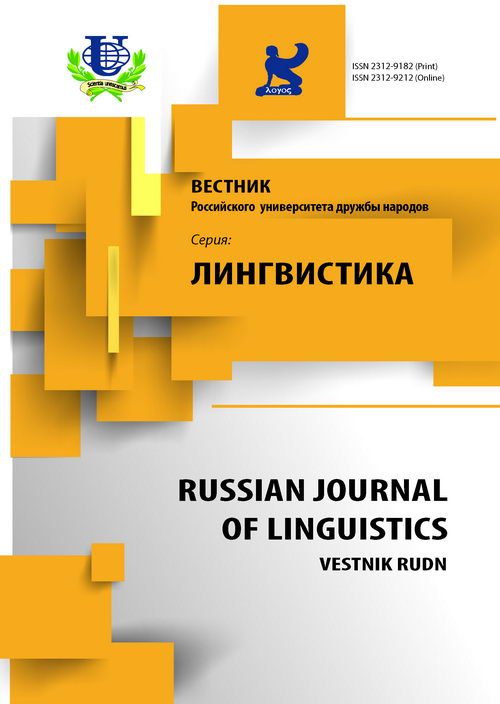A Cross-Cultural Study of American and Russian Proprieties in Communication
- Authors: Issers O.S1, Halvorson S.2
-
Affiliations:
- Omsk State University
- Florida State University
- Issue: Vol 19, No 4 (2015)
- Pages: 146-154
- Section: Articles
- URL: https://journals.rudn.ru/linguistics/article/view/9264
Cite item
Full Text
Abstract
An examination of eleven intercultural textbooks, used in the field of communication in America, reveals little research comparing Russian and American proprieties in communication (Chen & Starosta, 1998; Dodd, 1998; Jandt, 2004a; Jandt, 2004b; Kelly, Laffoon & McKerrow, 1994; Lustig & Koester, 1996; Martin & Nakayama, 2004; Martin & Nakayama, 2005; Martin, Nakayama & Flores, 2002; Samovar & Porter, 2003; Samovar & Porter, 2001). In order to investigate the similarities and differences (S/D) of the two countries, an instrument was developed containing questions dealing with proprieties and customs appropriate in both cultural settings. In order to maintain language integrity, the 29-item instrument was administered to English speaking students with: 1) no direct exposure to the Russian culture, or 2) direct exposure to the Russian culture. The results suggest proprieties in American and Russian society are more similar than difference in the majority of areas investigated in this research. However, there was a substantial difference between the two cultures in the following four areas: a) Russians are less likely than Americans to discuss their ethnicity in public situations; b) Russians are more polite than Americans in social situations; c) Russians feel more comfortable than Americans about speaking their minds in public situations; d) Russians are more honest when expressing opinions than their American counterparts.
About the authors
Oxsana S Issers
Omsk State University
Email: isserso@mail.ru
Faculty of Philology and Media
Sandra Halvorson
Florida State University
Email: shalvorson@pc.fsu.edu
College of Communication
References
- Chen, G. & Starosta, W.J. (1998). Foundations of intercultural communication. Boston: Allyn and Bacon.
- Dodd, C.H. (1998). Dynamics of intercultural communication (5th ed.). Boston, Massachusetts: McGraw Hill.
- Jandt, F.E. (2004a). An introduction to intercultural communication: Identities in a global community (4th ed.). San Bernardino, California: Sage Publications.
- Jandt, F.E. (2004b). Intercultural communication: A global reader. San Bernardino, California: Sage Publications.
- Kelly, C., Laffoon, E.A., McKerrow, R.E. (1994). Diversity in public communication: A reader. Dubuque, Iowa: Kendall/Hunt.
- Lustig, M.W. & Koester, J. (1996). Intercultural competence: Interpersonal communication across cultures (2nd). San Diego, California: HarperCollins College Publishers.
- Martin, J.N., Nakayama, T. K (2004). Intercultural communication in contexts (3rd ed.) Boston: McGraw Hill.
- Martin, J.N., Nakayama, T. K (2005). Experiencing intercultural communication: Anintroduction (2nd ed.). Boston: McGraw Hill.
- Martin, J.N., Nakayama, T.K. & Flores, L.A. (2002). Readings in intercultural Communication: Experiences and contexts (2nd ed.). Boston: McGraw Hill.
- Samovar, L.A. & Porter, R.E. (2001). Communication between cultures (4th ed.). California: Wadsworth.
- Samovar, L.A. & Porter, R.E. (2003). Intercultural communication: A reader (10th ed.). California: Wadsworth.

















